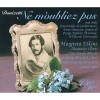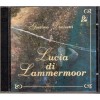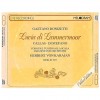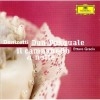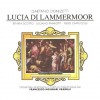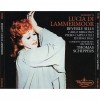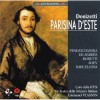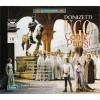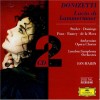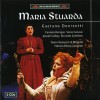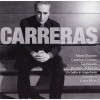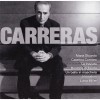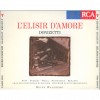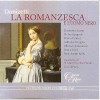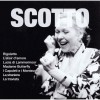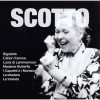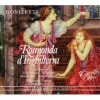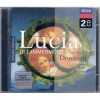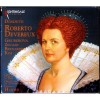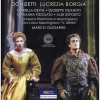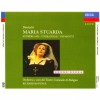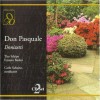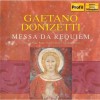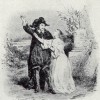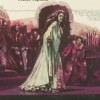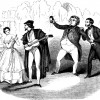Composers
Life
The youngest of three sons, Donizetti was born in 1797 in Bergamo's Borgo Canale quarter located just outside the city walls. His family was very poor with no tradition of music, his father being the caretaker of the town pawnshop. Nevertheless, Donizetti received some musical instruction from Johann Simon Mayr, a priest at Bergamo's principal church (and also himself a composer of successful operas).
Donizetti was not especially successful as a choirboy, but in 1806 he was one of the first pupils to be enrolled at the Lezioni Caritatevoli school, founded by Johann Simon Mayr, in Bergamo through a full scholarship. He received detailed training in the arts of fugue and counterpoint, and it was here that he launched his operatic career. After some minor compositions under the commission of Paolo Zanca, Donizetti wrote his fourth opera, Zoraïda di Granata. This work impressed Domenico Barbaia, a prominent theatre manager, and Donizetti was offered a contract to compose in Naples. Writing in Rome and Milan in addition to Naples, Donizetti achieved some success (his 75 operas written in the space of just 12 years were usually popular successes, but the critics were often unimpressed), but was not well known internationally until 1830, when his Anna Bolena was premiered in Milan. He almost instantly became famous throughout Europe. L'elisir d'amore, a comedy produced in 1832, came soon after, and is deemed one of the masterpieces of the comic opera, as is his Don Pasquale, written in 1843. Shortly after L'elisir d'amore, Donizetti composed Lucia di Lammermoor, based on the Sir Walter Scott novel The Bride of Lammermoor. It became his most famous opera, and one of the high points of the bel canto tradition, reaching stature similar to Bellini's Norma.
After the success of Lucrezia Borgia (1833) consolidated his reputation, Donizetti followed the paths of both Rossini and Bellini by visiting Paris, but his opera Marino Falerio suffered by comparison with Bellini's I puritani, and he returned to Naples to produce his already-mentioned masterpiece, Lucia di Lammermoor. As Donizetti's fame grew, so did his engagements, as he was further hired to write in both France and Italy. In 1838, he moved to Paris after the Italian censor objected to the production of Poliuto (on the grounds that such a sacred subject was inappropriate for the stage); there he wrote La fille du régiment, which became another success.
Donizetti's wife, Virginia Vasselli, gave birth to three children, none of whom survived. Within a year of his parents' deaths, his wife died from cholera. By 1843, Donizetti exhibited symptoms of syphilis. After being institutionalized in 1845, he was sent to Paris, where he could be cared for. After visits from friends, including Giuseppe Verdi, Donizetti was sent back to Bergamo, his hometown. After several years in the grip of insanity, he died in 1848 in the house of the noble family Scotti. After his death Donizetti was buried in the cemetery of Valtesse but in the late 19th century his body was transferred to Bergamo's Basilica of Santa Maria Maggiore near the grave of his teacher Johann Simon Mayr.
Donizetti is best known for his operatic works, but he also wrote music in a number of other forms, including some church music, a number of string quartets, and some orchestral works.
He was the younger brother of Giuseppe Donizetti, who had become, in 1828, Instructor General of the Imperial Ottoman Music at the court of Sultan Mahmud II (1808-1839).
Recently Added
Refine by search
view all| Country: | Italy |
| Period: | Romantique |
Biography
Life
The youngest of three sons, Donizetti was born in 1797 in Bergamo's Borgo Canale quarter located just outside the city walls. His family was very poor with no tradition of music, his father being the caretaker of the town pawnshop. Nevertheless, Donizetti received some musical instruction from Johann Simon Mayr, a priest at Bergamo's principal church (and also himself a composer of successful operas).
Donizetti was not especially successful as a choirboy, but in 1806 he was one of the first pupils to be enrolled at the Lezioni Caritatevoli school, founded by Johann Simon Mayr, in Bergamo through a full scholarship. He received detailed training in the arts of fugue and counterpoint, and it was here that he launched his operatic career. After some minor compositions under the commission of Paolo Zanca, Donizetti wrote his fourth opera, Zoraïda di Granata. This work impressed Domenico Barbaia, a prominent theatre manager, and Donizetti was offered a contract to compose in Naples. Writing in Rome and Milan in addition to Naples, Donizetti achieved some success (his 75 operas written in the space of just 12 years were usually popular successes, but the critics were often unimpressed), but was not well known internationally until 1830, when his Anna Bolena was premiered in Milan. He almost instantly became famous throughout Europe. L'elisir d'amore, a comedy produced in 1832, came soon after, and is deemed one of the masterpieces of the comic opera, as is his Don Pasquale, written in 1843. Shortly after L'elisir d'amore, Donizetti composed Lucia di Lammermoor, based on the Sir Walter Scott novel The Bride of Lammermoor. It became his most famous opera, and one of the high points of the bel canto tradition, reaching stature similar to Bellini's Norma.
After the success of Lucrezia Borgia (1833) consolidated his reputation, Donizetti followed the paths of both Rossini and Bellini by visiting Paris, but his opera Marino Falerio suffered by comparison with Bellini's I puritani, and he returned to Naples to produce his already-mentioned masterpiece, Lucia di Lammermoor. As Donizetti's fame grew, so did his engagements, as he was further hired to write in both France and Italy. In 1838, he moved to Paris after the Italian censor objected to the production of Poliuto (on the grounds that such a sacred subject was inappropriate for the stage); there he wrote La fille du régiment, which became another success.
Donizetti's wife, Virginia Vasselli, gave birth to three children, none of whom survived. Within a year of his parents' deaths, his wife died from cholera. By 1843, Donizetti exhibited symptoms of syphilis. After being institutionalized in 1845, he was sent to Paris, where he could be cared for. After visits from friends, including Giuseppe Verdi, Donizetti was sent back to Bergamo, his hometown. After several years in the grip of insanity, he died in 1848 in the house of the noble family Scotti. After his death Donizetti was buried in the cemetery of Valtesse but in the late 19th century his body was transferred to Bergamo's Basilica of Santa Maria Maggiore near the grave of his teacher Johann Simon Mayr.
Donizetti is best known for his operatic works, but he also wrote music in a number of other forms, including some church music, a number of string quartets, and some orchestral works.
He was the younger brother of Giuseppe Donizetti, who had become, in 1828, Instructor General of the Imperial Ottoman Music at the court of Sultan Mahmud II (1808-1839).
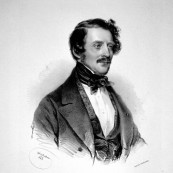






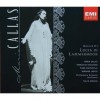
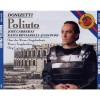
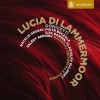
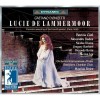
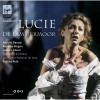
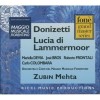


![The Opera Album 2011. [CD 2 of 2]](http://static.classicalm.com/repository/collection-cover/small/1345-img1369921777459572.jpg)
![Great Voices Of The Century - Sopranos, The Greatest Arias [CD4 of 4]](http://static.classicalm.com/repository/collection-cover/small/1404-img1403279266849057.jpg)









![Maria Callas - The Callas Rarities (1953–1969) [Remastered 2014]](http://static.classicalm.com/repository/disk-cover/small/4805-img1423154602288808.jpg)




![Roberto Alagna. Mes Plus Grands Roles A L'Opera [CD2 of 3]](http://static.classicalm.com/repository/disk-cover/small/3161-img1383837198247624.jpg)

























![Rita Streich - The Viennese Nightingale [CD 3 of 8]](http://static.classicalm.com/repository/disk-cover/small/3036-img1372356858815136.jpg)
![Rita Streich - The Viennese Nightingale [CD 5 of 8]](http://static.classicalm.com/repository/disk-cover/small/3038-img1372359002122453.jpg)





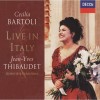

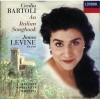





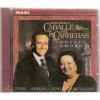


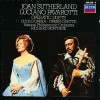


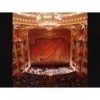







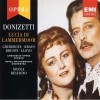
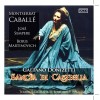

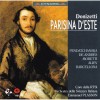



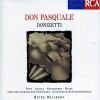
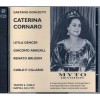

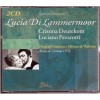

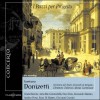
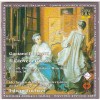






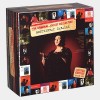

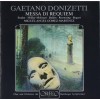


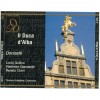
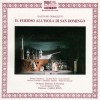


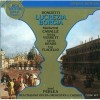

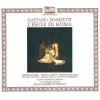
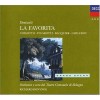
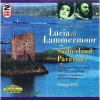


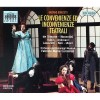

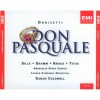
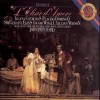
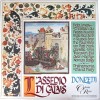
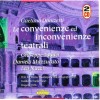
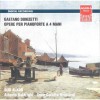


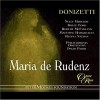
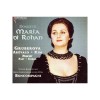

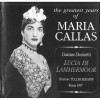
![Donizetti - Francesca di Foix [Larmore - Spagnoli - London PO]](http://static.classicalm.com/repository/composition-cover/small/23132-img1425661084284489.jpg)
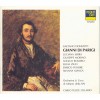


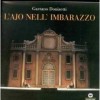

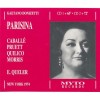
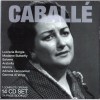


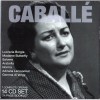



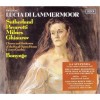





![Maria Callas - Donizetti Lucia di Lammermoor (1953) [Remastered 2014]](http://static.classicalm.com/repository/composition-cover/small/22921-img1423060717720780.jpg)
![Maria Callas - Donizetti Lucia di Lammermoor (1959) [Remastered 2014]](http://static.classicalm.com/repository/composition-cover/small/22922-img1423132378428332.jpg)

